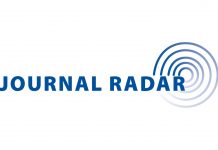Posted: December 2017
How do you envision immunotherapy interdigitating in the adjuvant and neoadjuvant setting in resectable nonsmall cell lung cancer (NSCLC)?
PACIFIC, which demonstrated a marked progression-free survival (PFS) advantage of 1 year of durvalumab after definitive concurrent chemoradiation in patients with unresectable NSCLC, gives us hope that this class of agents may likewise translate to benefit in those with resectable disease. Including EA5142, there are 4 active studies globally that will define the benefit of adjuvant anti-PD-1 or PD-L1 therapies after surgical resection and standard adjuvant chemotherapy. Some studies are planning to evaluate subsets of patients selected by tumor PD-L1. While I cannot predict how these studies will read out, I am confident we will ultimately be able to define a subset of patients that are cured by this approach, and I remain hopeful that these large research efforts are molded as we learn more about predictive biomarkers of response to these agents.
Based on the tolerability of these drugs and intriguing responses seen in a very small study of neoadjuvant nivolumab, there are increasing efforts to study single agent immunotherapy agents and combinations with chemotherapy and other checkpoint inhibitors in the preoperative setting. This is particularly important, as it lends the opportunity to learn about the immunobiology of response and resistance and to offer standard adjuvant therapies in nonresponding patients. There is also the theoretical advantage of having the larger tumor in situ when activating an immune response. I envision this approach becoming increasingly common on study and perhaps as part of standard care.
What is the optimal duration of IO Tx in this setting?
How can we test this? Each of the ongoing adjuvant studies is evaluating 1 year of therapy, as did the PACIFIC study. This duration of therapy is somewhat arbitrarily defined by necessity. as we have no data here. In advanced disease, these drugs can induce durable responses. We had little data on this same question in advanced until Checkmate 153 demonstrated a strong trend towards improved outcomes in those treated continuously versus stopping at 1 year. Given the different settings and the mechanisms of these drugs that can elicit antitumor immunity, I remain hopeful that a shorter course of therapy may be able to eliminate minimal residual disease in the adjuvant setting. If the ongoing adjuvant studies demonstrate a benefit of 1 year of therapy, I imagine it will be up to the NCI and the cooperative groups to pose the question of duration of therapy.
If successful, do you think IO Tx will ever substitute for chemotherapy? Or will we routinely graft it onto chemo, or give it subsequently after completion of adjuvant therapy?
The short answer is yes. I do think immunotherapy will eventually substitute for chemotherapy in some patients and may be combined with chemotherapy in some patients, although we do not yet know who to prescribe which therapy, which combination of therapies, or in which sequence. Given the time and resources needed to answer these questions, we would be prudent to await the mature survival data of the ongoing phase III studies looking at combinations and sequencing, as well as biomarkers. These data will enable rationally designed studies, ideally in the neoadjuvant setting where pathological tumor evaluation may give us early signals of benefit or lack thereof.
Do the negative results for EGFR mt (+) patient subset in the RADIANT trial discourage you from further testing EGFR TKIs in the adjuvant setting?
In this regard, is ALCHEMIST still a reasonable trial? Absolutely not. RADIANT wasn’t de-signed nor powered to answer the question of benefit of adjuvant EGFR TKI in patients with resected EGFR+ tumors. We would be remiss to dismiss this potentially curative approach based on too small a study. Not only is ALCHEMIST reasonable, it should remain a priority. The more timely question is if and how we will extrapolate from the data the ALCHEMIST will provide when considering other TKIs, in particular osimertinib, which is not only superior to erlotinib/gefitinib in the firstline treatment of metastatic disease, but is also better tolerated. This is a consideration of utmost importance when treating patients in the adjuvant setting, some of whom are cured by surgery alone.
What is the optimal duration of adjuvant therapy in EGFR mt (+) or ALK (+) NSCLC? Should we take our cue from the breast cancer literature with regard to hormonal therapy and give these agents for more extended periods(i.e., 5 to 10 years or more)? Instead of looking to the breast cancer literature to guide our study designs, perhaps we should look to GIST where, similar to EGFR and ALK+ tumors, GIST is driven by an oncogene mutation and treated with an adjuvant TKI. While adjuvant imatinib provides a DFS advantage when given for 1 year, it was not until 3 years of therapy when an overall survival advantage was seen. We may get some clues as to the optimal duration of therapy when ultimately evaluating the data from the ALCHEMIST studies, looking at 2 years of adjuvant TKI and the industry-sponsored osimertinib trial evaluating 3 years, although crosstrial comparisons are not appropriate when different drugs are used. Dr. Lecia Sequist is completing a study evaluating 3 months versus 2 years of adjuvant afatinib, which should give some insight into even shorter durations of therapy, although I do think we have sufficient data from GIST and perhaps from breast cancer to suggest that the study of more than 2 years of therapy is of interest.
How, if at all, does the risk-benefit ratio transform in the perioperative setting compared to the metastatic/recurrent NSCLC venue?
The treatment of metastatic disease remains palliative and we must be cognizant of the side effects, quality of life impact, and cost of our therapies relative to the survival benefit gained. The earlystage setting is strikingly different, in that our therapies are intended to cure; therefore, the risk-benefit ratio may be shifted towards years or decades of quality life gained, not just months. However, many of these good-intentioned perioperative trials have not succeeded.
Pushing a patient through adjuvant therapy that is not biomarkerdriven remains a challenge. Our gains with cisplatin-based chemotherapy are small and toxicities are high; yet it remains our standard of care. As our drugs become more tolerable and are better matched to an individual’s tumor, we have more stable ground to stand on when pushing patients to consider adjuvant therapy. This is very relevant when we discuss durations of targeted therapy that may ultimately be 5 or more years.
The neoadjuvant setting is very different. As surgery remains the largest component of curative therapy, we must be cautious not to give therapies that interfere with the patient’s ability to proceed with surgery due to toxicity. However, we have the ability to monitor treatment efficacy by scans and therefore adapt or stop ineffective therapies, something we cannot do in the adjuvant setting. Further, patients are more fit to tolerate therapies preoperatively; therefore, added risk (if it does not interfere with surgery) is justified with with the goal of increasing cure rates.✦
Related Articles
National Cancer Institute Adds Latest Clinical Trial to the ALCHEMIST Platform
Commentary Regarding Immune Checkpoint Inhibitors
Erlotinib, Crizotinib, Nivolumab: Big Three in ALCHEMIST Platform
Discussing ALCHEMIST with Shakun Malik, MD











